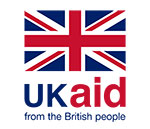World leaders recently gathered in Glasgow at COP26 to accelerate action towards addressing climate change. They’ve come from around the world to grapple with the most pressing existential crisis of our time with an urgent need to reduce global emissions.
No matter how successful the conference is, climate change will continue to push more people into humanitarian crisis in the years and decades to come. Over the past decade, 83 per cent of disasters resulting from natural hazards were due to extreme weather and climate-related events and even under the best projections, the humanitarian system will be forced to face a growing number of climate-related hazards. Additionally, climate change intensifies humanitarian challenges in complex and interconnected ways that can also increase displacement, food insecurity and conflict.
Mobile technology, while not a panacea, can and should play a key role in strengthening the humanitarian system to face the coming challenges.
The GSMA’s Mobile for Humanitarian Innovation programme (M4H) releases a new report today outlining some of the use cases we’ve already seen in our portfolio where mobile technology can play a role.
The report outlines five use-cases showing either ways to mitigate the effects of climate change or build resilience to better cope with those effects.
- Mitigation: Unlocking access to clean energy
Those who are most vulnerable to the devastating impacts of climate change are often those who contribute the least to global emissions. And while it is not the responsibility of those affected to solve the global climate crisis, the humanitarian system can play a role in promoting the use and spread of sustainable solutions.
Energy, for example, is a basic need, yet, for many crisis-affected populations, it is expensive, dirty, and dangerous. Mobile-enabled solutions improve access to clean energy in humanitarian settings, particularly in areas not currently served by traditional grid infrastructure by leveraging pay-as-you-go (PAYG) solutions. Using mobile technology, PAYG can help make clean energy affordable and more reliable for low-income populations. M4H supported projects like Alight, Altech and BBOX all implement models to enable access to clean energy such as solar in humanitarian contexts.
- Resilience: Building financial resilience through mobile services
Building resilience at the household level is vital. Financial assets provide a buffer against the impact of a disaster, allowing households to recover and rebuild after crises without negative impacts on other necessities like food or education. M4H has long focused on the potential of mobile financial services to enable improved financial resilience through a variety of mechanisms. Cash assistance, delivered through mobile channels, for example, can provide an efficient, secure, and dignified way to support people affected by crisis. In Somalia, the GSMA works with CARE International and Telesom to identify recipients’ identities using their voices to enable cash delivery. This enables secure and timely delivery of support.
- Resilience: Strengthening resilience of farmers through agritech and financial services
Food insecurity is a large and growing humanitarian issue. Before the onset of the pandemic, it was estimated that nearly 690 million people were food insecure, or 8.9 per cent of the global population. The situation has only worsened since then as economies slowed around the world. Over the course of 2020, an additional 20 million people were acutely hungry, and it is estimated that an additional 35 million people will be hungry in 2021. One way to combat this issue is to strengthen the resilience of farmers. The GSMA’s AgriTech programme focuses on this issue more broadly. Within the M4H portfolio, Naya Jeevan supports the resilience of pastoralists in Pakistan by providing livestock insurance and providing tele-veterinary assistance.
- Resilience: Early warning for early action
One of the longest-standing use cases of mobile technology in building resilience against climate-induced shocks is early warning systems (EWS). Mobile technology can play a key role in both the collection of vital data, warning of climate-induced hazards, as well as information dissemination to responders and users. In Haiti, Mercy Corps worked with Viamo and Digicel to design a 12 week training programme for farmers in a hazard-prone area on extreme weather preparedness. The programme helped to both build resilience and provide early warning for extreme events.
- Resilience: Targeting disaster relief efforts
Finally, mobile technology has been used by humanitarian actors to assess damage and target relief. Several M4H supported programmes have supported emergency response effects leveraging mobile technology. Flowminder, for example uses anonymised and aggregated call detail records (CDR) data to track population flows following a disaster to target assistance. Likewise, Nokia Saving Lives uses unmanned aerial vehicles to support the Philippines Red Cross in relief efforts.
Through these examples we can illustrate the ways in which mobile can support affected people to better manage the impacts of climate change. By scaling these solutions, and innovating new ones, such programmes can play their part in addressing the enormous challenge that COP26 aims to make progress on.
More information on these use cases, included examples from across our portfolio can be found in our new report, The climate crisis: mobile-enabled solutions in humanitarian emergencies.



